Mold flipper: how do you choose capacity for Indonesia’s heavier molds?
Handling heavy molds is a serious task in any industrial setting. In places like Indonesia, where manufacturing is growing rapidly, molds are getting bigger and heavier. Using an overhead crane with slings or chains to flip these molds is a common practice. But it is slow, requires multiple operators, and is incredibly dangerous. A single slip can damage a mold worth tens of thousands of dollars, halt your production line, and most importantly, cause severe injury to your team. I’ve seen these situations play out, and the cost of an accident always outweighs the investment in the right equipment. This is why choosing the right mold flipper, with the correct capacity, is not just about efficiency. It is about creating a safe and stable production environment.
To choose the right capacity for heavier Indonesian molds, you must consider not just the mold's dead weight but also add a safety margin of at least 20-30%. You also need to account for dynamic loads during the flipping motion and any attachments or clamping devices. Always select a flipper with a capacity that comfortably exceeds your heaviest possible load.
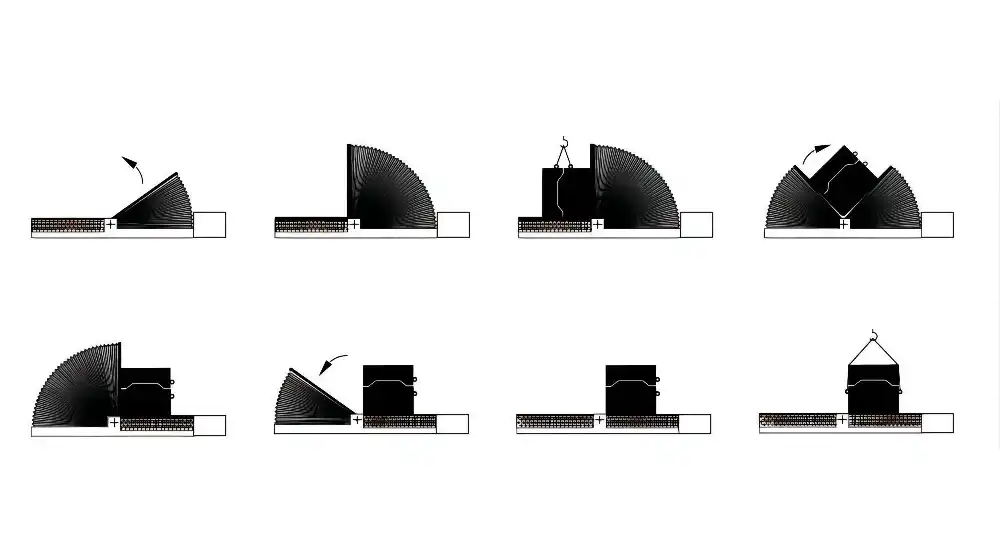
Choosing the right capacity seems simple on the surface. You just match the number on the machine to the weight of your mold. But my years in this industry have taught me that the real answer is more detailed. It’s about understanding the forces at work, planning for the unexpected, and thinking about the machine as a long-term partner in your production line. We need to look beyond the single number and consider the specific factors that ensure safety and reliability, especially with the demanding scale of Indonesian manufacturing. Let's break down how to make the right choice.
What specific weight factors should you consider for Indonesian molds?
You have the technical specification sheet for your mold. It clearly lists the weight. It seems easy to just use that number to choose your mold flipper. But is that number the full story? Relying solely on the listed "dead weight" is a common mistake that can lead to significant problems. Over time, this can overload your flipper, causing premature wear on the drive system, bearings, and structure. In the worst-case scenario, it can lead to a catastrophic failure. This is a risk you cannot afford to take. A proper analysis requires you to look deeper, at the total weight the machine will actually handle during operation.
For Indonesian molds, consider three weight factors: the base weight of the mold, the weight of all auxiliary components like clamping systems or inserts, and the dynamic load factor, which accounts for the forces generated during the tilting process. A conservative safety margin is non-negotiable.
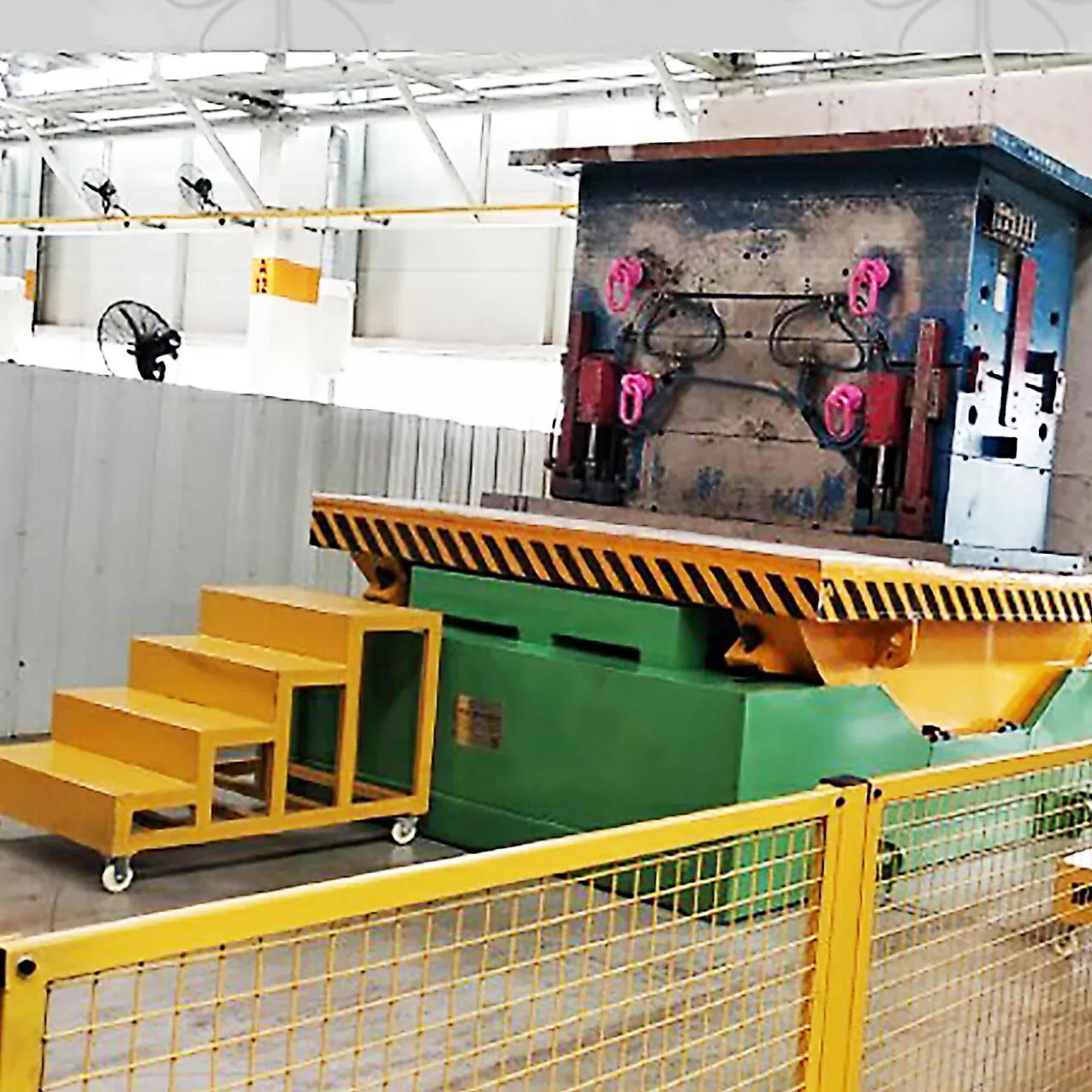
Deeper Dive: Calculating the True Working Load
The weight of a mold is not a static number. It's a combination of factors that create the "true working load." To choose the correct capacity, you must calculate this accurately. I always advise my clients to think in terms of the maximum possible load, not the average one.
Calculating Total Weight
First, you start with the base weight of the mold itself. This is the number you find on the spec sheet. But the analysis can't stop there. You must add the weight of any components that will be on the mold when it is flipped. This includes clamping systems, hot runner manifolds, inserts, or any other auxiliary parts. These items can add significant weight that is often overlooked. For example, a complex hot runner system on a large automotive mold can add several hundred kilograms.
| Component | Example Weight Range | Why It Matters |
|---|---|---|
| Mold Base | 5,000 - 20,000 kg | The foundation of your calculation. |
| Hot Runner System | 100 - 500 kg | Often forgotten but adds direct weight. |
| Clamping Plates | 50 - 200 kg | Attached during handling and must be included. |
| Large Inserts | 20 - 150 kg | Variable weight that depends on the product being molded. |
| Total Working Load | Sum of all above | The actual weight the flipper must handle. |
The Critical Safety Margin
After you calculate the total working load, you must add a safety margin. I recommend a minimum of 20%, but for heavy, critical molds, a 30% margin is much safer. So, if your maximum working load is 10,000 kg, you should be looking for a flipper with a capacity of at least 12,000 kg to 13,000 kg. This margin accounts for dynamic loads—the forces created by starting and stopping the flipping motion. It also accounts for slight shifts in the center of gravity and protects the machine's components from excessive stress, ensuring a longer operational life.
I remember a client in Jakarta who purchased a 15-ton flipper for their 15-ton mold. They wanted to save on cost. Within 18 months, the gearbox was showing signs of extreme wear and the motor was overheating. They faced unexpected downtime and costly repairs. We replaced it with a 20-ton capacity machine. It has been running for over five years without a single issue. That small upfront saving cost them much more in the long run. This is a lesson I share with everyone.
How does a mold flipper’s drive system impact its capacity and reliability?
You have calculated your required capacity, including a healthy safety margin. Now you see two different mold flippers, both rated for 20 tons. One uses a hydraulic system, and the other uses an electromechanical drive. They might look similar and have the same capacity rating, but how they deliver that power is completely different. Choosing the wrong drive system can be a frustrating mistake. A jerky, uncontrolled motion can misalign or even damage a precision mold. A system not built for continuous, heavy use can fail, leading to expensive downtime and maintenance headaches right when you need to be productive. To make the right choice, you need to understand how each drive system works and which one is the best fit for your factory's specific needs.
A mold flipper's drive system directly impacts its performance. Hydraulic systems typically offer higher power for extremely heavy molds and have inherent overload protection. Electromechanical systems, using motors and gearboxes, provide precise control and smoother operation, which is often better for delicate or complex molds.
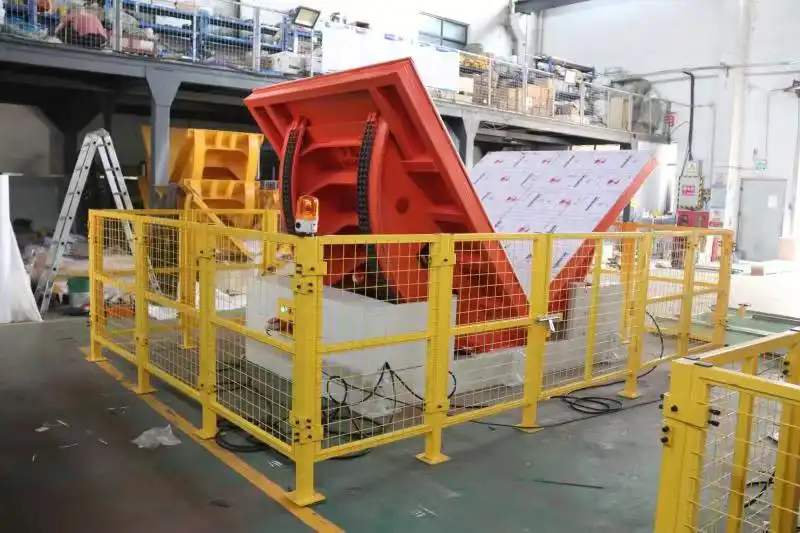
Deeper Dive: Hydraulic vs. Electromechanical Systems
The drive system is the heart of the mold flipper. It dictates the machine's power, precision, and maintenance profile. Both hydraulic and electromechanical systems are capable, but they have distinct advantages and disadvantages that make them suitable for different applications.
Hydraulic Drive Systems: The Powerhouse
Hydraulic systems generate force using pressurized fluid. A motor drives a pump, which pushes hydraulic oil into a cylinder to move the flipper's table. They are known for their raw power and robustness.
- Strengths: Hydraulic systems can generate enormous torque, making them an excellent choice for flipping extremely heavy molds (50 tons and above). The fluid itself acts as a cushion, absorbing shock loads well. They also have a natural overload protection; if the load is too heavy, a relief valve will open, preventing mechanical damage. The components are generally robust and can withstand harsh industrial environments.
- Weaknesses: The biggest drawback is the potential for fluid leaks. A leak can create a safety hazard and a mess on the factory floor. These systems also require regular maintenance, including checking fluid levels, replacing filters, and inspecting hoses. Their motion control is generally less precise than electromechanical systems.
Electromechanical Drive Systems: The Precision Tool
Electromechanical systems use an electric motor connected to a high-torque gearbox (like a worm gear reducer) and a chain or screw jack system to move the load. Modern systems almost always include a Variable Frequency Drive (VFD).
- Strengths: These systems offer incredibly precise and smooth control over the flipping motion. The VFD allows for soft starts and stops, which protects the mold and the machine from jerking. They are much cleaner, with no risk of oil leaks. They are also more energy-efficient, as the motor only draws significant power when it is moving the load. This makes them easier to integrate with modern digital control systems like MES or IoT platforms for tracking and automation.
- Weaknesses: For extremely high capacities, the gearbox and motor required can become very large and expensive. They may not handle sudden shock loads as well as a hydraulic system.
Making the Choice
For a steel mill owner like Javier, who is focused on reliability, reduced energy consumption, and digitalization, an electromechanical system is often the superior choice for molds up to 40-50 tons. It aligns perfectly with goals for a cleaner, more efficient, and smarter factory.
| Feature | Hydraulic System | Electromechanical System | Best For... |
|---|---|---|---|
| Capacity | Excellent for extremely heavy loads (50+ tons) | Excellent for loads up to 50 tons | Matching the drive to your mold weight. |
| Control | Good, but can be less precise | Excellent, with smooth starts/stops via VFD | Protecting delicate or complex molds. |
| Maintenance | Requires fluid and filter checks; risk of leaks | Lower; sealed gearboxes, no oil leaks | Factories aiming for lower maintenance overhead. |
| Energy Use | Pump often runs continuously | Motor draws power only when moving | Reducing overall factory energy consumption. |
| Integration | Can be integrated, but more complex | Simple to integrate with PLC and MES systems | Factories undergoing a digital transformation. |
A steel wire manufacturer I worked with in Surabaya was constantly dealing with hydraulic fluid cleanup in their mold maintenance area. It was a persistent operational headache. We helped them specify and install an electromechanical flipper with a sealed gearbox. The change was immediate. Their workspace became cleaner and safer, and the smooth VFD control actually reduced the time they spent on mold alignment after maintenance.
What safety features are critical when handling heavier molds?
Imagine a 20-ton block of steel, your expensive mold, suspended and rotating in the middle of your workshop. What is stopping it from falling? A power outage, a component failure, or a simple operator error could turn that machine into a source of catastrophic failure. An accident could damage the mold beyond repair, destroy the machine itself, and critically, endanger the lives of your team members. For any factory owner, safety is not just a priority; it is a responsibility. The cost of a single accident in downtime, damages, and potential liability is immense. This is why you must not just look at a machine's performance, but you must scrutinize its safety systems. Proactively choosing a mold flipper with redundant, fail-safe features is the most important part of your decision.
For heavier molds, critical safety features include robust mechanical locking systems that engage during a power failure, emergency stop buttons, overload protection sensors, and perimeter safety guards or light curtains to prevent personnel from entering the operating area during a cycle.
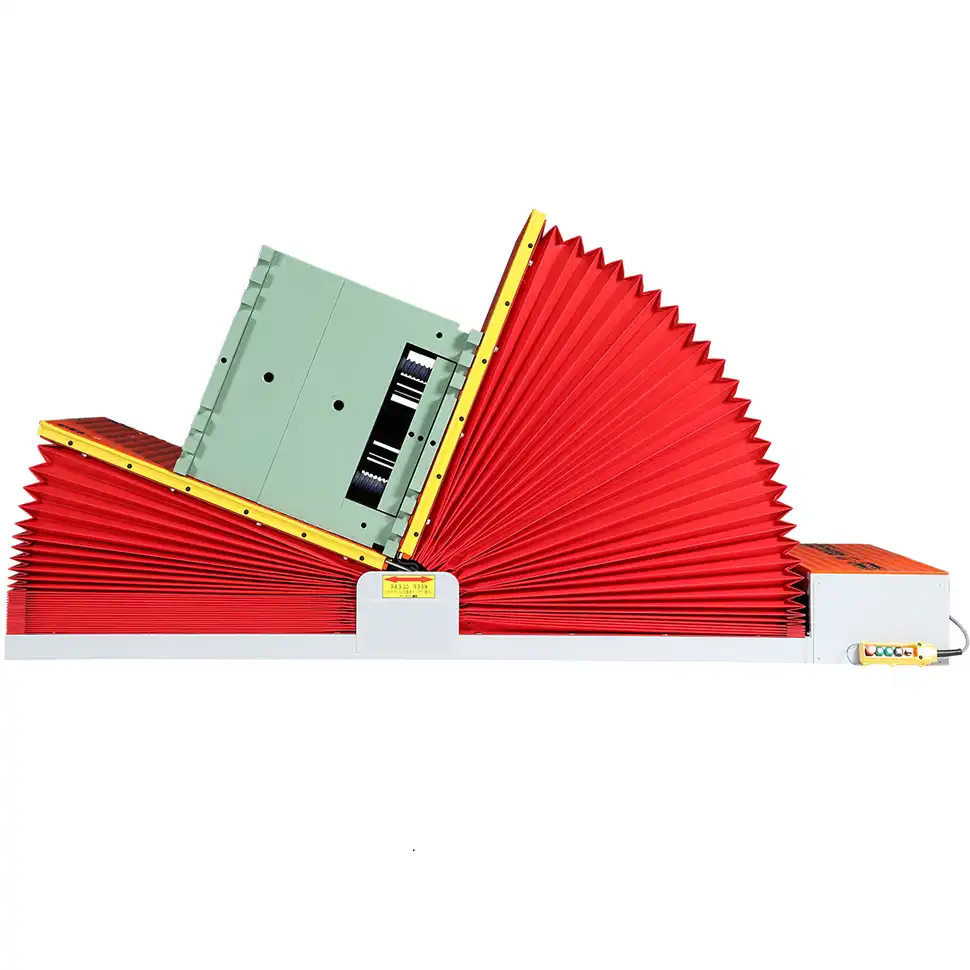
Deeper Dive: A Non-Negotiable Safety Checklist
When you are handling loads that weigh several tons, you cannot have a single point of failure. A well-designed mold flipper uses multiple, overlapping safety systems. As someone who has designed and built these machines, I see safety as the foundation of good engineering. Here are the systems I insist on.
Redundant Braking and Locking Systems
You need more than just the motor's brake. A quality electromechanical system has at least two braking mechanisms.
- Motor Brake: This is the primary brake, engaged by the VFD for controlled stops.
- Mechanical Lock or Worm Gear: A worm gear drive is inherently self-locking. Due to the angle of the gears, it is very difficult for the load to "back-drive" the motor. This provides a crucial layer of safety. Even if the motor brake fails, the gearbox itself should hold the load in place.
The most critical test is to ask: what happens if the power is cut mid-flip? The machine must immediately and automatically lock in its current position, without any slipping. This is a non-negotiable feature.
Operator and Area Safety
Protecting your people is paramount. The machine must have systems to protect both the operator and anyone else in the workshop.
- Perimeter Guarding: This can be physical fencing that prevents anyone from walking into the machine's path while it is operating. A more advanced solution is a light curtain. This is a sensor that projects a field of infrared light. If a person or object breaks the field, the machine stops instantly.
- Emergency Stop (E-Stop) Buttons: These must be clearly visible, easily accessible from all sides of the machine, and hard-wired to cut all power to the motors.
- Hold-to-Run Controls: This is a simple but effective feature. The operator must keep a button pressed for the machine to move. If they let go for any reason, the machine stops. This prevents an operator from starting a cycle and walking away.
- Audible and Visual Alarms: A flashing light and a loud buzzer should activate just before and during the flipping cycle to warn everyone in the area that the machine is in motion.
A Safety Checklist for Your Purchase
When you evaluate a potential mold flipper, use this checklist to talk to the manufacturer.
| Safety Feature | Why It's Critical | What to Look For |
|---|---|---|
| Power-Off Locking | Prevents catastrophic failure during a power outage. | A self-locking gearbox or an automatic mechanical brake. |
| Overload Protection | Stops the machine if the load is too heavy. | Integrated sensors that cut motor power and trigger an alarm. |
| Perimeter Guarding | Prevents personnel from entering the danger zone. | Physical fencing or certified light curtains. |
| Accessible E-Stops | Allows for an instant, manual shutdown in an emergency. | Multiple, large, red buttons on different sides of the machine. |
| Limit Switches | Prevents the table from over-traveling its intended 90° or 180°. | Hard-wired switches that define the start and end of the cycle. |
| Certifications | Provides third-party verification of safety standards. | Look for CE marking or other recognized local safety certifications. |
For a leader responsible for a large facility, thinking about these features is a core part of risk management. Investing in safety is investing in operational stability and protecting your greatest asset: your people.
Beyond weight, what other mold specifications affect flipper choice?
You have done your homework. You calculated the total working load, added a safety margin, selected the right drive system, and verified all the critical safety features. You might think you are ready to place an order. But there is one more crucial step. A 10-ton mold that is tall and thin places very different stresses on a flipper than a 10-ton mold that is low and wide. If you ignore the mold's physical shape and dimensions, you can end up with a machine that is unstable or a table that is simply too small for the job. The mold could tip or shift during the flip, creating a dangerous situation. A complete and professional analysis always includes the mold's geometry.
Beyond weight, you must consider the mold's overall dimensions (length, width, height), the location of its center of gravity, and the surface area of the table required. An unbalanced or oddly shaped mold needs a flipper with a larger table and a more robust structure to ensure stability during the 90-degree rotation.
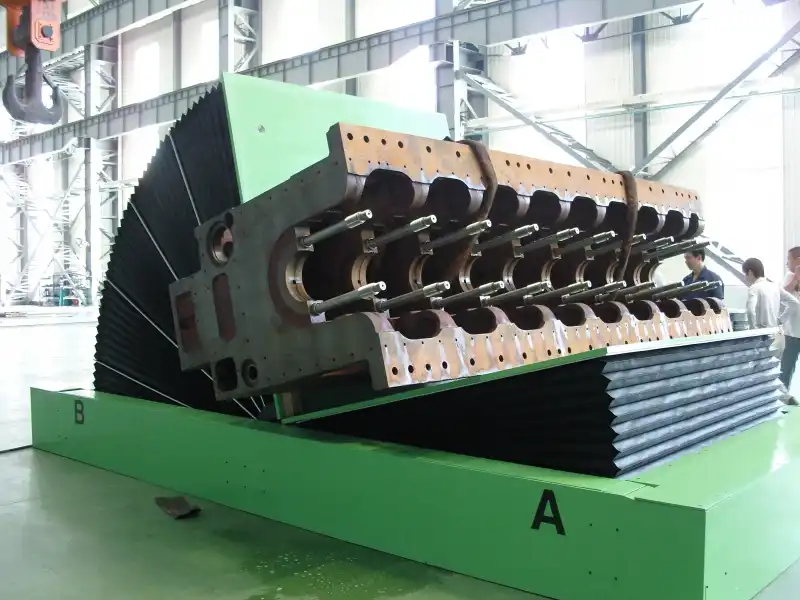
Deeper Dive: Thinking in Three Dimensions
A mold flipper doesn't just lift a weight; it rotates a three-dimensional object. Understanding the object's geometry is essential for a safe and effective machine design. This is where a supplier becomes a true partner, helping you think through these details.
The Critical Role of the Center of Gravity (CG)
The center of gravity is the point where the mold's weight is perfectly balanced.
- Why it matters: If the CG is high or far from the center of the flipper's table, it creates a large turning force (torque) as the machine operates. This puts immense stress on the motor, gearbox, and machine frame. A mold with a high CG is much harder to flip than a flat mold of the same weight. It's like trying to tip over a tall filing cabinet versus trying to tip over a small safe. The cabinet is much easier to tip because its CG is higher.
- What to do: You must provide the manufacturer with the approximate CG of your heaviest and most awkwardly shaped molds. A good manufacturer will use this information to ensure the drive system is powerful enough and the machine frame is strong enough to handle the torque without instability.
Matching the Flipper Table to the Mold Footprint
The mold must fit securely on the flipper's table.
- Table Size (Length x Width): The table must be large enough to support the entire base of your mold. Any significant overhang is a safety risk, as it can cause the mold to become unstable during rotation. You should measure your largest mold's footprint and ensure the table is bigger.
- Custom Fixtures: My slogan is "TOTAL SOLUTION FOR WRAPPING MACHINE," and that philosophy extends here. We don't just sell standard machines. If you have round objects like steel coils or irregularly shaped molds, the flipper may need a custom table. This could be a V-shaped cradle to hold a coil, or custom clamping points to secure an unusual mold. A flat table is not always the best solution.
Integrating with Your Factory Workflow
Finally, think about how the flipper will fit into your existing process.
- Loading and Unloading: How will you place the mold onto the flipper? Usually, it's with an overhead crane or a large forklift. The height of the flipper's table at the horizontal position must match your handling equipment. There needs to be enough clearance around the machine for safe access.
- Workshop Space: A mold flipper requires a significant operational footprint. You must account for the space the machine takes up, plus the arc of the table as it flips, plus a safety zone around it.
Here are the questions a good partner will ask you:
| Consideration | Question to Ask | Impact on Flipper Design |
|---|---|---|
| Loading Method | Will you use a crane or a forklift? | Affects required table height and structural design. |
| Mold Shape | Is it a simple block, or is it tall, irregular, or round? | Determines if a flat table is sufficient or if custom fixtures are needed. |
| Center of Gravity | Where is the CG on your most challenging molds? | Crucial for calculating torque and ensuring drive system adequacy. |
| Workshop Layout | What is the available floor space and ceiling height? | Dictates the maximum possible size and configuration of the machine. |
Thinking through these points ensures you get a machine that is not just powerful enough, but is a perfect fit for your specific molds and your factory floor.
Conclusion
Choosing the right mold flipper capacity goes beyond weight. It's a strategic analysis of safety, mechanics, and your mold's unique shape for long-term, reliable production.




